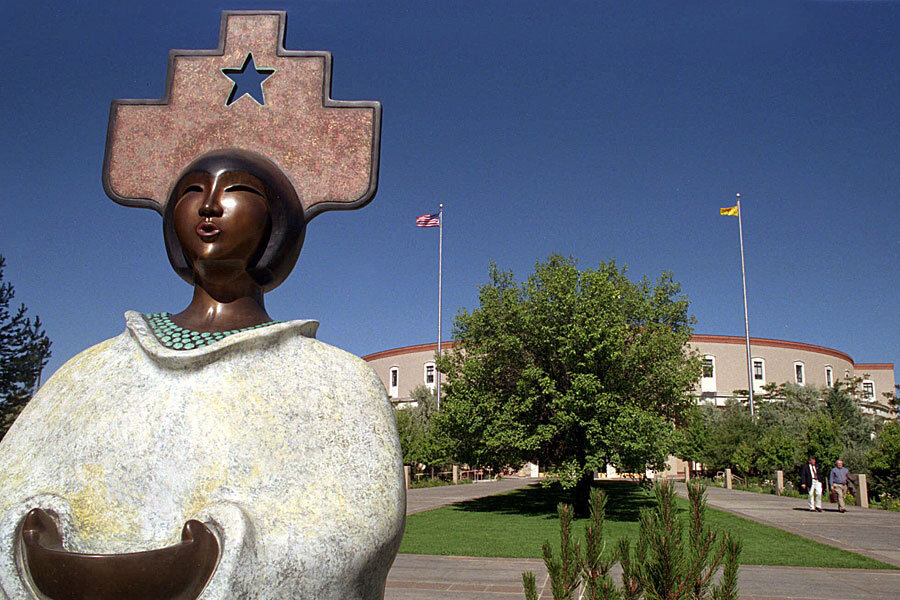Common Core: A tribal perspective
Loading...
As most states in this country move toward implementing the Common Core State Standards, it is important to honor our nation's diversity and recognize the rich learning opportunities our children can receive through a multilingual, multicultural education.
Our journey at the Pueblo of Jemez began 14 years ago, as we initiated efforts to take ownership over the education of our children. We continued this journey with the development of Jemez education standards, rooted in the Jemez language and culture, and aligned to the common core.
The Pueblo of Jemez is located in north-central New Mexico. We have a tribal membership of approximately 3,700. Jemez is a very traditional pueblo (Native community) and has maintained its cultural and religious practices. We are the only tribe in which Towa, an unwritten language, is spoken.
“We are, in essence, developing an indigenous pedagogy that best meets the academic needs of our student population.”
Through a communitywide strategic-planning process, Jemez asserted its authority and desire to determine what is most important to the education of our tribal citizens. Priority was placed on the Jemez language and culture, which is the heart of how, where, and what we teach our children to ensure the survival and advancement of our Jemez people.
The Jemez Department of Education was redesigned to reflect a comprehensive approach to education, beginning with the tribe's most precious resource – our infants – and working up to our college students and adult learners. Additionally, our Jemez education standards provided a template for bringing the common core to life in a meaningful way for our people.
A critical first step for our pueblo was the tribe's decision to transition our Walatowa Head Start program from English to the Towa language for instruction. This supported the tribe in implementing transition programs with the feeder schools in Jemez and reinforced the importance of grounding the children in their home language.
The move sets a strong precedent, as it makes Jemez one of the first federally funded Head Start programs to move its instruction from English to the home language of the community. Through this work, we hope to have opened opportunities and set the stage for other tribal – as well as minority and migrant communities – to do the same and develop the home languages of their children through the education provided in their local Head Start programs.
The transition of our tribal Head Start to a full Jemez language-immersion program affects the transitions, curriculum, vertical alignment, and practices of all our Jemez feeder schools. It also directly led to a focused professional-development and training effort on the effective implementation of the common core while honoring local languages and cultures.
As with most reservations, our children are affected by several often-competing education systems (the U.S. Department of the Interior's Bureau of Indian Education, the state, and the tribe). To ensure that our common-core implementation would be effective across all school systems, we gathered our stakeholders and began the development of mutual education priorities and a coordinated professional-development plan. The priorities are topics that influence language, culture, community-based learning, and experiential learning, as well as state and federal education policies. The work that we are doing together is the first of its kind nationally.
Jemez also entered into a memorandum of understanding with the state of New Mexico to support certification for tribally approved specialists in Jemez language and culture.
Jemez will determine which tribal members can be vetted as certified Native-language instructors. In turn, the state will recognize the tribe's authority and grant alternative certification for the recommended individuals to teach within the public schools.
The tribe's direct involvement with schools has resulted in the integration of our tribal language, culture, and priorities directly into the curriculum. We are, in essence, developing an indigenous pedagogy that best meets the academic needs of our student population.
The common core has only opened the door to opportunities that exist in challenging our teachers to make the diverse communities within the Jemez Valley Corridor an extension of their classrooms. For Jemez, our focus is to make education relevant to our communities and include the outside experiences of our children in the classroom.
The common-core standards are what we are challenging our children to learn, but how can we expect them to master the content if it has little relevance to their life experiences and communities? Through the ways we implement the standards, as educators and leaders, we have the opportunity to honor the rich history of this country and the diversity which makes us all unique.
Kevin Shendo (Pueblo of Jemez) has served as the education director for the Pueblo of Jemez, in north-central New Mexico, since 2001. He oversees the Jemez early-childhood program, the Jemez Community Library, the Education Services Center, and school operations, and maintains collaborative working relationships between the tribe and San Diego Riverside Charter School (grades K-8) and Walatowa Charter High School (9-12), both of which are in the Pueblo of Jemez.
Editorial Projects in Education holds all rights to this article.
Education in Indian Country: Running in Place
Native Students Share National Stage at White House Conference







